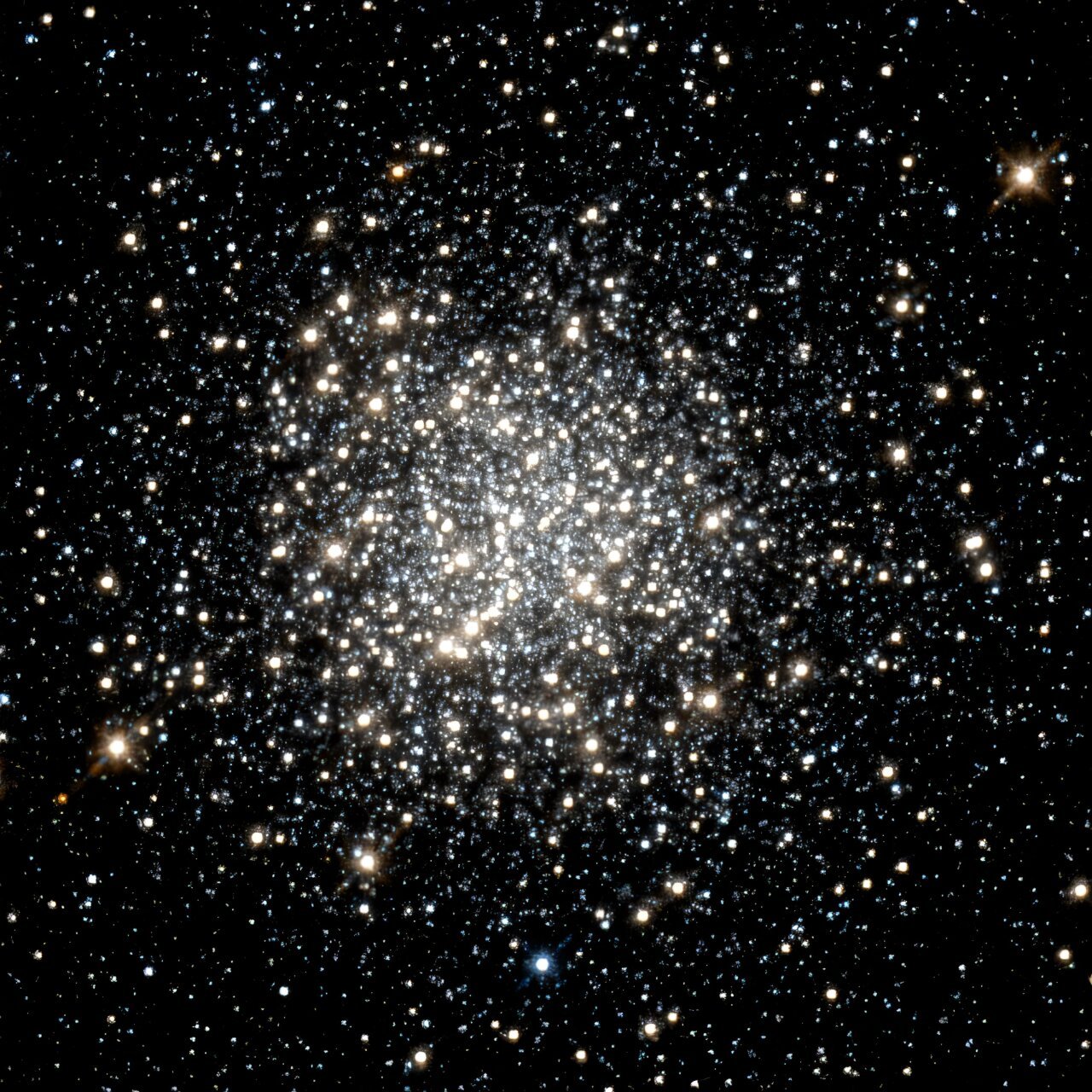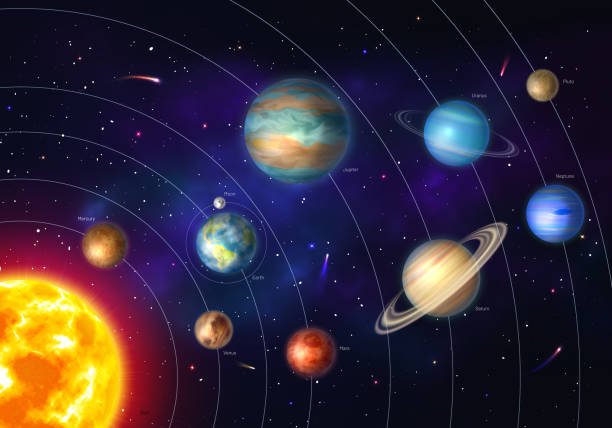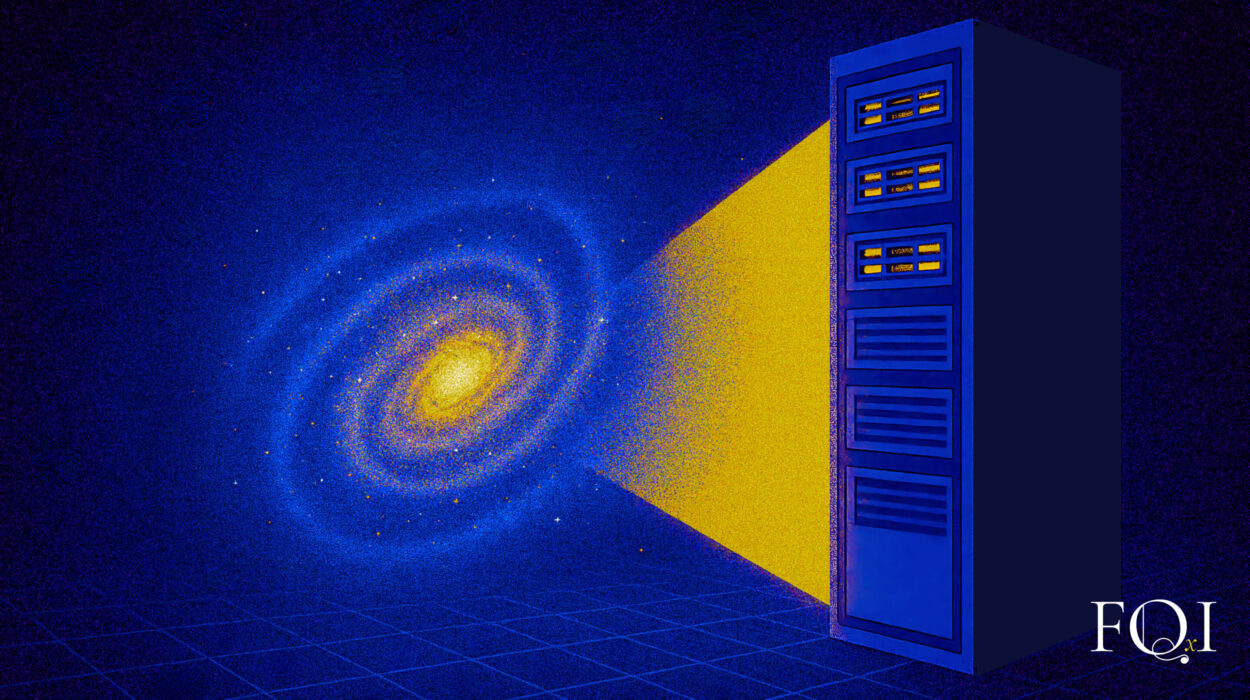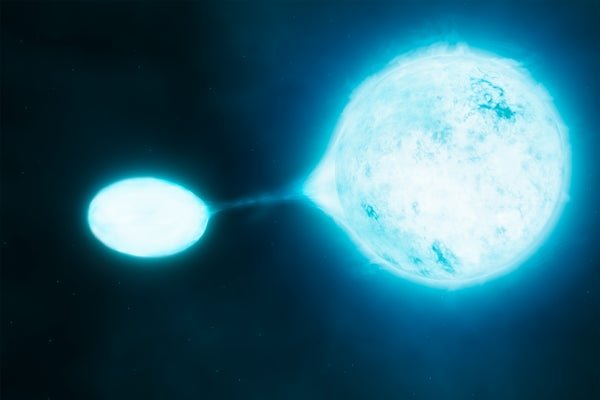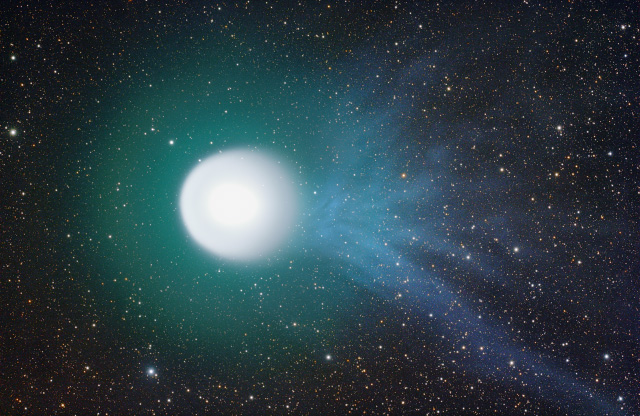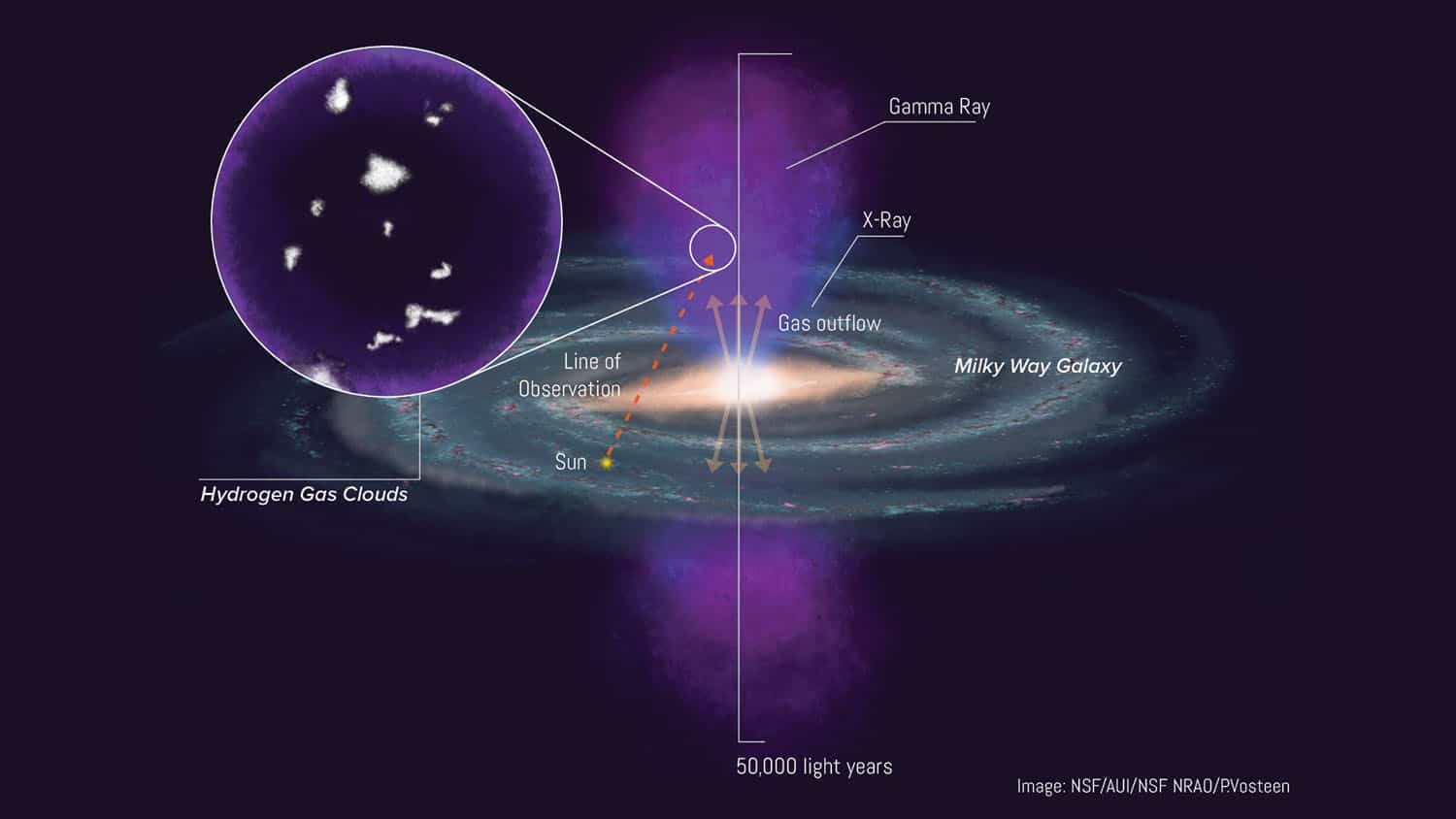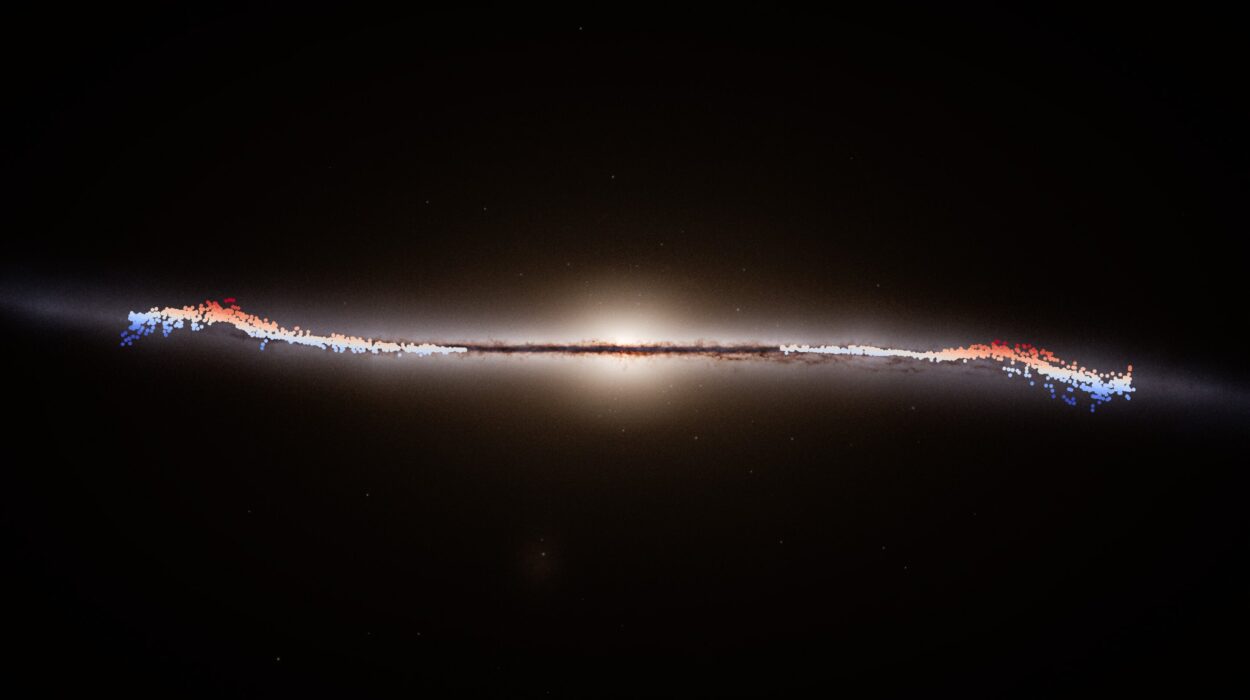Floating serenely in the southern sky, the Large Magellanic Cloud (LMC) is more than just a nearby dwarf galaxy—it’s a living archive of the cosmos. Among its brightest relics is NGC 1754, a densely packed globular cluster that has quietly orbited its galactic host for nearly 13 billion years. Recently, astronomers turned the sharp gaze of the Hubble Space Telescope (HST) toward this ancient stellar gathering, unveiling a cosmic story that stretches nearly to the dawn of time.
Using Hubble’s high-precision imaging tools, scientists have not only sharpened the picture of this venerable cluster but have also deepened our understanding of how such celestial structures form and evolve. The study, led by Camilla Giusti of the University of Bologna and published May 15 on the arXiv preprint server, offers a new glimpse into one of the most massive and compact clusters in the LMC. And the findings are nothing short of fascinating.
Globular Clusters: Star Cities of the Early Universe
To understand why NGC 1754 is such an astronomical treasure, one must first appreciate what a globular cluster is. Imagine a city in space—except instead of buildings, it’s packed with hundreds of thousands of stars, all tightly bound together by gravity. These clusters are ancient, dense, and somewhat mysterious. Most globular clusters are over 10 billion years old, making them nearly as old as the universe itself.
Because all the stars in a globular cluster formed roughly at the same time, from the same cloud of gas, these clusters act like cosmic laboratories. Astronomers study them to understand how stars age, how galaxies grow, and even how dark matter might behave. With such stellar uniformity and age, clusters like NGC 1754 offer a pristine look into the earliest epochs of star formation.
NGC 1754 was first cataloged in 1836 by astronomer John Herschel. Nestled some 170,000 light-years away in the LMC, this cluster has been hiding in plain sight—until now. With new Hubble observations, astronomers have begun peeling back the layers of this ancient star city.
Peering into the Past with Hubble’s Precision
The recent observations utilized Hubble’s Wide Field Camera 3 (WFC3) and Advanced Camera for Surveys (ACS), two of the most powerful eyes ever deployed into orbit. Giusti’s team collected 16 high-resolution images of NGC 1754 with WFC3’s UVIS1 channel, focusing directly on the core of the cluster. To complement this, they captured another 13 images with ACS in two optical filters—F606W and F814W—targeting a reference field about five arcminutes from the center.
Together, this dual imaging campaign offered a comprehensive look at both the dense core and the surrounding stellar halo. The data not only refined previous measurements of the cluster’s physical structure but also allowed the team to probe its dynamical state—a key indicator of how the cluster has evolved over time.
NGC 1754: An Old, Dense, and Evolving Cluster
Hubble’s observations confirm what astronomers had long suspected: NGC 1754 is exceptionally old. The cluster clocks in at an astonishing 12.8 billion years, forming just a billion years after the Big Bang. This places it among the oldest known structures in the LMC, and indeed in the universe.
In terms of size, the cluster has a core radius of 2.74 light-years—the region where the stellar density is highest—and a half-mass radius of 10.2 light-years, meaning half its stars are packed within that sphere. These numbers underscore its compactness. With an estimated mass of 100,000 solar masses, NGC 1754 is a gravitational heavyweight.
One particularly crucial property is its metallicity—a term astronomers use to describe the abundance of elements heavier than hydrogen and helium. NGC 1754 has a metallicity of -1.45, which translates to roughly 1/30th the metal content of our Sun. This extremely low metallicity is a cosmic fingerprint, indicating that the stars in this cluster were born when the universe was still largely devoid of heavy elements. In other words, NGC 1754 is a fossil from a time when the cosmos was still learning how to build complexity.
A Silent Witness to Cosmic History
Beyond its basic measurements, NGC 1754’s very existence tells a deeper story about the nature of globular clusters and the galaxies that host them. By comparing the properties of LMC globulars like NGC 1754 with their counterparts in the Milky Way, the researchers found a tantalizing pattern: globular cluster formation appears to have kicked off simultaneously in both galaxies.
This revelation hints at a universal epoch of cluster formation in the early universe, suggesting that the conditions needed to produce massive, dense stellar systems arose regardless of galactic environment. Whether in the massive spirals of the Milky Way or the smaller irregular shape of the LMC, nature found a way to build these glittering star cities.
The team’s analysis also delves into the dynamical state of NGC 1754. Over time, globular clusters evolve under their own gravitational pull. Interactions between stars slowly shift their orbits, causing denser cores and, in some cases, leading to “core collapse”—a state in which the central region becomes dramatically compact.
NGC 1754 appears to be approaching this critical phase. Its advanced dynamical age and small core radius suggest that it is nearing, or perhaps already entering, a state of core collapse. This kind of gravitational evolution further distinguishes old, compact clusters from their looser, younger counterparts.
Why Dynamical Age Matters
Just as humans age at different rates depending on lifestyle and environment, globular clusters age dynamically in ways that don’t always correspond to their chronological age. NGC 1754’s compactness, in combination with its advanced dynamical age, suggests a long history of internal evolution. Denser clusters tend to evolve more quickly, as frequent gravitational interactions redistribute energy and cause stars to migrate toward or away from the core.
Giusti and her colleagues argue that variations in core radius among old LMC globulars can be explained by differing degrees of dynamical evolution. Less compact clusters are simply not as far along in their internal evolution. In that light, NGC 1754 emerges not just as a representative of early star formation, but also as a benchmark for understanding the gravitational life cycles of globular clusters across galaxies.
A Universal Blueprint for Star Formation?
The implications of this study ripple outward like gravitational waves. If globular clusters began forming at roughly the same cosmic moment in different types of galaxies, it suggests that the underlying processes behind their formation were universal. Star formation, on the largest and most ancient scales, may not have been as environment-dependent as once thought.
That insight is crucial not only for understanding our own Milky Way’s history, but also for constructing models of galaxy formation in the early universe. Globular clusters are some of the first building blocks of galaxies. Understanding their formation, structure, and evolution helps illuminate how galaxies themselves came to be.
Moreover, NGC 1754’s advanced evolutionary state provides a natural test case for simulations of cluster dynamics. As astronomers continue to refine models of how globular clusters age, real-life data points like this one serve as both calibration tools and sources of new puzzles.
A View to the Future
Though Hubble has been humanity’s eye in the cosmos for over three decades, its observations of NGC 1754 show that there are still ancient secrets waiting to be uncovered. The next steps may lie with even more powerful instruments. The James Webb Space Telescope (JWST), for instance, promises to look even deeper into globular clusters, particularly in the infrared spectrum where it can peer through cosmic dust.
Future spectroscopic studies could also reveal more about the internal motions of stars within NGC 1754, helping to map out its gravitational structure in even more detail. And as computational models improve, astronomers may be able to simulate its future—predicting how and when it might collapse into a core-dominated cluster.
But perhaps the most remarkable thing about this star city is its age. NGC 1754 has existed for 90% of the universe’s lifetime. When our own Sun was just a forming speck in a collapsing gas cloud, the stars of NGC 1754 had already been shining for over 8 billion years. It has watched galaxies collide, stars be born and die, and cosmic structures take shape—all while orbiting peacefully in the outskirts of the LMC.
Conclusion: A Star City Whispers Across Time
The Hubble Space Telescope has once again lived up to its legacy—revealing not just distant objects, but deep truths. In studying NGC 1754, astronomers are doing more than cataloging an ancient object; they are decoding part of the universe’s autobiography. This quiet, compact globular cluster is not just a collection of stars; it is a relic of a time when the cosmos was young, and a beacon for understanding how galaxies—and by extension, we—came to be.
NGC 1754 continues to orbit, silently chronicling the universe as it has for billions of years. And thanks to Hubble and the scientists who study it, we are now just a little closer to understanding its language.
Reference: Camilla Giusti et al, Structural parameters, chronological age and dynamical age of the LMC globular cluster NGC 1754, arXiv (2025). DOI: 10.48550/arxiv.2505.10323
